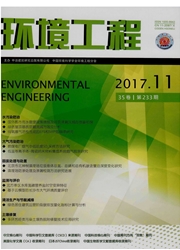

 中文摘要:
中文摘要:
针对博斯腾湖日益严重的盐污染问题,以博斯腾湖西岸表面流人工湿地为研究对象,引当地排渠水进入人工湿地,对人工湿地的进水和出水进行连续7个月的水质监测,对比分析进水和出水中8种离子(Ca~(2+)、Na~+、K~+、Mg~(2+)、Cl~-、SO_4~(2-)、CO_3~(2-)、HCO_3~-)和矿化度的变化,结果表明:人工湿地进水含盐量较高,8种离子的浓度和矿化度波动较大,4月和10月进水为微咸水,5—9月进水为咸水,而出水含盐量相对较低,8种离子的浓度和矿化度波动较小,各月出水均为微咸水。经计算分析可知,人工湿地对水体总盐的平均去除率为51%,水体盐分的去除率与温度呈正相关,且随季节性温度变化而发生变化。
 英文摘要:
英文摘要:
Aiming at increasingly serious salt pollution problems in Bosten Lake,by taking the surface flow constructed wetland at west bank of Bosten Lake as research object,the research drew water from local discharge canal into the constructed wetland and conducted a continuous water quality monitoring at water inlet and outlet for seven months; after that,the author made a comparative analysis on changes on eight ions( Ca~(2+),Na~+,K~+,Mg~(2+),Cl-,SO_4~(2-),CO_3~(2-) and HCO_3~-) and degree of mineralization of influent and effluent water,and the results showed that salt content of influent water in constructed wetland was high concentration and degree of mineralization of eight ions fluctuated wildly,influent water in April and October was brackish water, while that from May to September was salt water; Salt content of effluent water was relatively low.Concentration of eight ions and degree of mineralization fluctuated relatively slightly,and effluent water in each month was brackish water. Through computational analysis,the average removal efficiency of total salt of water was 51% by the constructed wetland,removal efficiency of salinity of water was positively correlated with temperature and changes with the seasonal change of temperature.
 同期刊论文项目
同期刊论文项目
 同项目期刊论文
同项目期刊论文
 期刊信息
期刊信息
